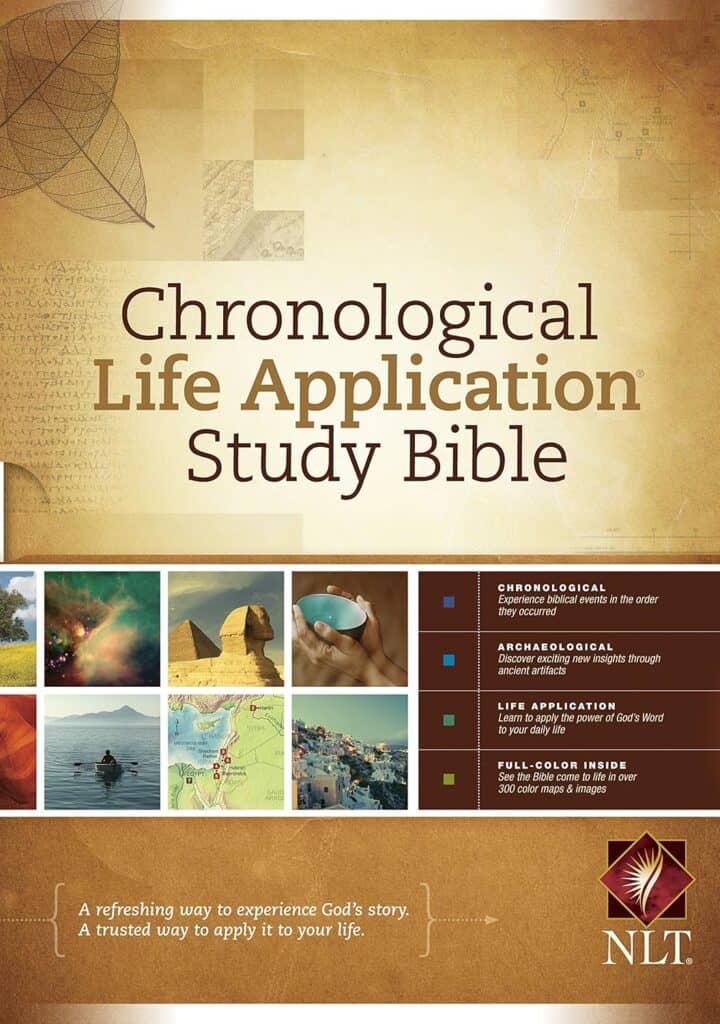The Bible’s Structure: Understanding the Bigger Picture
The Bible is an extraordinary collection of 66 books, written over a span of approximately two thousand years by around 40 different authors. Despite being composed by individuals from various backgrounds—prophets, kings, fishermen, and scholars—it presents a beautifully unified message of God’s love, redemption, and purpose for humanity.
Yet, if you’ve ever opened the Bible and tried to follow a linear timeline, you may have noticed something: it’s not arranged in chronological order. Instead, the books are grouped by literary genre—law, history, poetry, prophecy, Gospels, and epistles—rather than by the sequence in which events happened.
For many readers, this structure can make it challenging to grasp the overall biblical timeline and how key events connect. That’s where reading the Bible in chronological order becomes incredibly helpful. It allows us to follow the unfolding story of God’s plan as it happened, helping us see the grand narrative of Scripture in a clearer and more engaging way.
What Goes Where? Understanding the Bible’s Order
When you begin reading the first few books of the Old Testament, you are generally following a chronological sequence. However, as you progress, the order of events starts to shift. For example, the books of Kings and Chronicles describe historical events, while the writings of prophets like Isaiah and Jeremiah overlap with those same time periods but appear later in the Bible.
If the Bible had been written as one continuous book by a single author, it might have been structured chronologically. Instead, it has been carefully compiled and preserved in groupings that reflect its different literary styles and purposes. While this organization is useful for study and teaching, it can sometimes make it difficult for readers—whether they are new to the Bible or have been studying it for years—to understand the historical flow of biblical events.
By reading the Bible in chronological order, we can piece together the full historical narrative, seeing how different events and teachings fit into God’s unfolding plan. This approach can deepen our appreciation for the Scriptures, making the stories, prophecies, and promises of God even more impactful.
[amazon box=”1414339275″]
How Is the Bible Arranged?
The Bible is arranged into some definite sections. Some categorize them into more sub-sections than we will show here. Even though we were going to talk about the benefits of reading the Bible chronologically from time to time, let’s first look at the way that the protestant Bible is normally arranged.
| Sections | Topic | Books |
|---|---|---|
| Section 1 | The Law | Genesis – Deuteronomy |
| Section 2 | History | Joshua – Esther |
| Section 3 | Poetry | Job – Song of Solomon |
| Section 4 | Prophecy | Isaiah – Malachi |
| Section 5 | Gospels | Matthew – John |
| Section 6 | History of Church | Acts |
| Section 7 | Letters (epistles) | Romans – Jude |
| Section 8 | Prophecy | Book of Revelation |
The Old Testament: Structure and Organization
At first glance, the Old Testament seems to follow a chronological flow, especially in the early books. The first five books—Genesis through Deuteronomy—tell a continuous story, from creation to Israel’s journey toward the Promised Land. However, as you progress, the order shifts from a historical timeline to a thematic arrangement.
The 39 books of the Old Testament are traditionally divided into four main sections:
1. The Law (Genesis–Deuteronomy)
Also known as the Torah or Pentateuch, these first five books lay the foundation for the entire Bible. They contain the story of creation, the patriarchs (Abraham, Isaac, and Jacob), Israel’s enslavement in Egypt, the Exodus, and the giving of God’s law to His people.
2. History (Joshua–Esther)
This section includes 12 books that chronicle Israel’s journey after entering the Promised Land. From Joshua’s conquest to the rise and fall of Israel’s kings, these books provide essential historical context for the rest of the Bible.
3. Poetry & Wisdom (Job–Song of Solomon)
These five books contain wisdom literature and poetic writings that reflect on suffering, worship, love, and godly living. The Book of Job, often considered one of the oldest writings, fits within the time of the patriarchs, while the Psalms and Proverbs span centuries of Israel’s history.
4. Prophecy (Isaiah–Malachi)
The final section consists of 17 books written by prophets who spoke God’s word to Israel.
- Major Prophets (Isaiah–Daniel): These five books contain longer, more detailed prophecies.
- Minor Prophets (Hosea–Malachi): These 12 shorter books are just as powerful, addressing Israel’s sin, judgment, and future restoration.
While the term “minor prophets” refers to length rather than importance, every prophetic message is significant in revealing God’s plan.
Understanding this structure helps readers navigate the Old Testament more effectively, whether studying it in its traditional order or through a chronological reading plan.
Check These Chronological Bibles on Amazon.
The Old Testament: Structure and Organization
At first glance, the Old Testament seems to follow a chronological flow, especially in the early books. The first five books—Genesis through Deuteronomy—tell a continuous story, from creation to Israel’s journey toward the Promised Land. However, as you progress, the order shifts from a historical timeline to a thematic arrangement.
The 39 books of the Old Testament are traditionally divided into four main sections:
1. The Law (Genesis–Deuteronomy)
Also known as the Torah or Pentateuch, these first five books lay the foundation for the entire Bible. They contain the story of creation, the patriarchs (Abraham, Isaac, and Jacob), Israel’s enslavement in Egypt, the Exodus, and the giving of God’s law to His people.
2. History (Joshua–Esther)
This section includes 12 books that chronicle Israel’s journey after entering the Promised Land. From Joshua’s conquest to the rise and fall of Israel’s kings, these books provide essential historical context for the rest of the Bible.
3. Poetry & Wisdom (Job–Song of Solomon)
These five books contain wisdom literature and poetic writings that reflect on suffering, worship, love, and godly living. The Book of Job, often considered one of the oldest writings, fits within the time of the patriarchs, while the Psalms and Proverbs span centuries of Israel’s history.
4. Prophecy (Isaiah–Malachi)
The final section consists of 17 books written by prophets who spoke God’s word to Israel.
- Major Prophets (Isaiah–Daniel): These five books contain longer, more detailed prophecies.
- Minor Prophets (Hosea–Malachi): These 12 shorter books are just as powerful, addressing Israel’s sin, judgment, and future restoration.
While the term “minor prophets” refers to length rather than importance, every prophetic message is significant in revealing God’s plan.
Understanding this structure helps readers navigate the Old Testament more effectively, whether studying it in its traditional order or through a chronological reading plan.
The Chronological Bible that I own is the Chronological LIfe Application Bible. It is a favorite!

Great Biblical Structure But How about Chronological Bible Reading
So, someone who is just beginning to be involved in Bible study or ever daily reading of the Bible may think its structure is a bit haphazard. However, it’s not. It’s very well put together, the Holy Spirit has protected it through thousands of years and it is the living, breathing word of God.
The Bible as it is structured allows us to go into any Christian denomination of like-minded faith and ready and study the scriptures together. You can follow along with a pastor or teacher who might be reading the Bible. Even though the modern translations might vary just a bit, you can still read the scripture passage that is being taught.
The Benefits of Reading the Bible In Chronological Order
Although for practical reasons, it may not be the best thing to make a chronological Bible you primary Bible as you go to church, Bible studies, etc., it certainly can help you as you delve into the scriptures for spiritual growth and encouragement. Here are some benefits of reading the Bible in chronological order.

It Can Help you simply see the Big Picture Unfold Very Clearly
The Bible contains the most majestic, powerful, and life-changing message ever conceived or told. Biblical history contains the message of kings and kingdoms, rich and poor, young and old, wars, and times of peace.
However, it all points to the glory of the Most High God and the redemption that was brought to us through the Lord Jesus Christ. It’s certainly a privilege to read the Bible in the sections that we normally do. But, also, it is so very helpful and enjoyable to read it in a chronological context where the narrative is woven together as one incredible story.
It Can Help You Understand More About the Character of God
Sometimes when we are reading some tough passages, we may not quite understand what God is up to without the proper context.
Unbelievers who criticize the Bible will frequently claim that Jesus was good, but the God of the Old Testament is some kind of violent ogre or madman. They say this because there is quite a bit of violence and some pretty rough stuff that happens in the Old Testament.
But, taken out of context, people can be confused about what God was doing, or why He let certain things happen. However, we need to see it in the larger context of the amazing story of God’s chosen nation, Israel. Then we can see why God had to allow the types of wars, violence, etc., that happened.
Maybe we will go into that at another time, but one of the huge reasons that much of the violence was allowed in the Old Testament was because God was protecting the Messianic bloodline through which the Savior of the world would come. Sometimes you can see it a bit more clearly when you are reading the Bible or doing your Bible study in chronological order.
[amazon box=”1414339275″]
Connecting the Dots: How Chronological Reading Fills in the Gaps
While any Bible reading is valuable, diving into Scripture without understanding the larger context can sometimes be confusing. Many Bible reading plans are structured to help you complete the entire Bible in a year, but they often jump between books, making it difficult to follow the overarching story.
Reading the Bible in chronological order offers a fresh perspective. Instead of piecing together events from different books, you can follow the biblical timeline as it unfolds. This approach helps clarify how different passages fit together, revealing the continuous flow of biblical history.
Imagine reading about King David’s reign in 1 & 2 Samuel, then immediately encountering David’s psalms written during those events. Or studying the Book of Acts and then reading Paul’s epistles in the order he wrote them. Seeing these connections enhances comprehension and brings Scripture to life in a powerful way.
By dedicating even a few weeks or months to a chronological reading plan, you’ll find yourself returning each day to where you left off—like following a grand adventure through God’s Word!
A Fresh Motivation to Read God’s Word
The Holy Spirit is the ultimate guide who draws us to Scripture. However, we are wired for stories, and the Bible is the most compelling narrative ever told. Reading the Bible in chronological order transforms it from a collection of separate books into an epic, unfolding drama—one that captures your attention and keeps you engaged.
Most of us read the Bible in its traditional format, which makes it easier to find specific passages. But keeping a chronological study Bible nearby can be a game-changer, especially if you ever find yourself in a Bible-reading slump (let’s be honest—we’ve all been there).
In a culture where the word “epic” is overused, the Bible stands as the true epic of human history. It tells the ultimate story of supernatural power, the triumph of good over evil, and the redemption of broken humanity. Through its pages, we see God’s hand at work, offering hope, peace, and eternal joy.
If you’ve ever struggled with consistency in your Bible reading, a chronological Bible reading plan might be just what you need to reignite your passion for Scripture.
More Than Just Another Christian Task
If you own a chronological Bible, I encourage you to take it off the shelf and start reading. If you don’t have one yet, consider picking one up. But here’s the key—don’t think of this as just another task on your Christian to-do list.
Reading the Bible in chronological order isn’t about checking off a box; it’s about deepening your understanding of God’s Word and seeing His plan unfold in a fresh way. Whether you incorporate it into your daily devotional time, set aside a few weeks or months for a focused reading, or commit to completing a chronological reading plan in a year, the goal is simple: to grow in faith and knowledge of Scripture.
Choosing the Right Chronological Bible
There are many options when it comes to chronological Bibles, and selecting the right one can enhance your reading experience. Some versions include additional study notes, historical context, and insights that make the journey even more rewarding.
For a well-rounded experience, I highly recommend the NLT Chronological Life Application Study Bible. It combines the readability of the New Living Translation with in-depth notes, maps, and application insights, making it a fantastic tool for both personal study and spiritual growth.
📖 Check out the NLT Chronological Life Application Study Bible on Amazon
If you prefer a more traditional translation, there are also KJV and NIV chronological Bibles available. The right choice depends on your preference, but any of these will help bring biblical events to life in a way that makes sense historically.





Leave a Reply